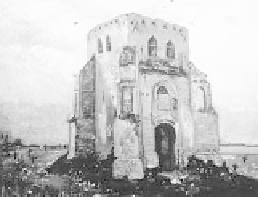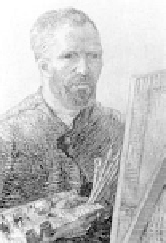Travel Reference
In-Depth Information
Theo's support—f inancial and
emotional—allowed Vincent to
spend the rest of his short life
painting.
Vincent moved from rural,
religious, poor Holland to Paris,
the City of Light. Vincent van
Gone.
• Continue to...
Paris (March 1886-Feb 1888): Impressionism
he sun begins to break through, lighting up everything he paints.
His canvases are more colorful and the landscapes more spacious,
with plenty of open sky, giving a feeling of exhilaration after the
closed, dark world of Nuenen.
In the cafés and bars of Paris' bohemian Montmartre district,
Vincent met the revolutionary Impressionists. He roomed with
Theo and became friends with other struggling young painters,
such as Paul Gauguin and Henri de Toulouse-Lautrec. His health
improved, he became more sociable, had an affair with an older
woman, and was generally happy.
He signed up to study under a well-known classical teacher
but quit after only a few classes. He couldn't afford to hire models,
so he roamed the streets, sketch pad in hand, and learned from his
Impressionist friends.
The Impressionists emphasized getting out of the stuffy studio
and setting up canvases outside on the street or in the countryside
to paint the play of sunlight of the trees, buildings, and water.
As you see in this room, at first, Vincent copied from the
Impressionist masters. He painted garden scenes like Claude
Monet, café snapshots like Edgar Degas, “block prints” like the
Japanese masters, and self-portraits...like nobody else.
Self-Portrait as an Artist
(1888)
“I am now living with my brother Vincent,
who is studying the art of painting with
indefatigable zeal.”
—Theo van Gogh to a friend
Here, the budding young artist proudly displays
his new palette full of bright new colors, trying
his hand at the Impressionist technique of build-
ing a scene using dabs of different-colored paint.
A whole new world of art—and life—opened up
to him in Paris.






















